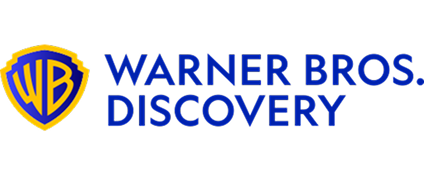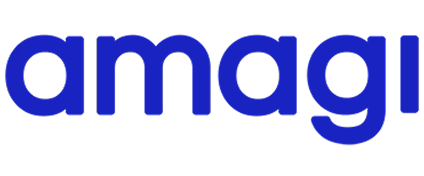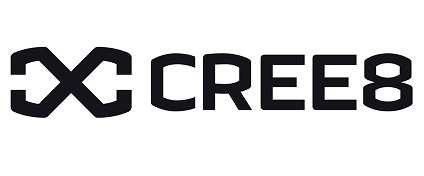Ways Vitrina Empowers Content Acquirers Globally

Introduction
The market for premium content acquisition is characterized by two defining forces: unprecedented velocity and global fragmentation.
For Content Acquirers—senior executives at streamers, studios, and distributors tasked with securing a competitive slate—the challenge is not merely finding content, but finding it first, performing rapid due diligence, and successfully closing the deal with verified decision-makers before the competition is even aware the project exists.
Relying on traditional methods—festival runs, market intelligence reports, or relying solely on agents—is a strategic liability.
The only sustainable advantage in the 21st-century M&E supply chain comes from an algorithmic approach that provides an early warning system for projects and maps the global network of collaborators.
This guide breaks down the strategic Ways Vitrina Empowers Content Acquirers Globally, demonstrating a proven methodology for transforming a fragmented landscape into a predictable source of high-quality content leads.
Table of content
- The Executive Mandate: Solving the Content Acquisition Visibility Crisis
- The Algorithmic Imperative: Why Manual Scouting Fails Today’s Strategy
- Strategic Advantage: Ways Vitrina Empowers Content Acquirers Globally
- Quantifying the Edge: From Discovery to Deal Closure
- Conclusion: Owning the Future of Content Discovery
- Frequently Asked Questions
Key Takeaways
| Core Challenge | Content Acquirers lack real-time, global visibility into projects in development and the verified contacts required for efficient pre-buy and financing deals. |
| Strategic Solution | Implement an algorithmic intelligence platform to secure first-mover advantage and conduct rapid commercial due diligence on projects and potential partners. |
| Vitrina’s Role | Vitrina provides the essential early warning system by tracking 400,000+ Film & TV projects and linking them to 3M+ verified executive contacts. |
The Executive Mandate: Solving the Content Acquisition Visibility Crisis
For the Content Acquirer, the primary risk is not overpaying for content, but missing the high-value project entirely. The competitive pressure to find, vet, and secure content acquisition leads earlier in the cycle is immense. This pressure is amplified by three critical pain points:
- Late Discovery and Competitive Bidding: When a project is formally announced or hits the market, competition is already intense, driving up prices and reducing the chance of securing favorable terms. The acquisition strategy must penetrate the development and pre-production stages.
- Global Due Diligence Complexity: With production increasingly scattered across Europe, Asia, and LATAM, validating the credentials, financial track record, and specific commercial history of international co-production partners and distributors is a manual, resource-intensive, and often unreliable process. According to a 2024 report by Omdia, the volume of co-productions involving three or more international partners has increased by over 40% in the last five years, making the partner vetting process significantly more complex.
- The Contact Gap: Even when a project is identified, outreach often fails because the target contact is incorrect, outdated, or generic. Successful acquisition hinges on reaching the specific executive—the Head of Distribution, the Co-Production VP, or the Financier—who holds the authority. This is where the strategic Ways Vitrina Empowers Content Acquirers Globally begins to provide systemic value.
The lack of a single, verifiable source of truth for global project tracking and executive-level intelligence forces executives into a reactive position. The core mandate is to transition from merely tracking the market to shaping the market through pre-emptive action.
The Algorithmic Imperative: Why Manual Scouting Fails Today’s Strategy
A strategy built on human effort alone cannot cope with the sheer volume and speed of today’s content market. Over 400,000 film and television projects are in some stage of development or production globally.
Manually scraping trade publications or relying on personal networks for competitive intelligence is inefficient and non-scalable, a fact demonstrated by the high resource cost and low lead-to-deal conversion rates reported across the industry.
The solution requires an algorithmic intelligence platform—a system that automates the collection of production metadata, verifies the data against the M&E supply chain, and translates project movement into actionable commercial signals. This platform must provide:
- Verifiable Project Status: An accurate, real-time status of all global production projects, broken down into specific lifecycle stages (e.g., Scripting, Packaging, Pre-Production).
- Executive-Project Linkage: A direct link from the project status to the executive responsible for that phase of commercialization (e.g., the person signing the co-production or distribution deal).
- Workflow Integration: The capability to integrate this intelligence directly into the executive’s decision-making workflow via alerts and CRM tools.
This strategic shift away from manual scouting to an automated, data-driven approach is the foundation for understanding how Vitrina empowers content acquirers.
Strategic Advantage: Ways Vitrina Empowers Content Acquirers Globally
Vitrina’s platform is purpose-built to address the acquisition visibility crisis by offering a multi-faceted content acquisition strategy toolset. Here are the strategic Ways Vitrina Empowers Content Acquirers Globally, ensuring they maintain a competitive edge from discovery to deal closure:
1. Early Warning on 400K+ Global Projects
Vitrina tracks over 400,000 Film & TV projects across its 13 detailed life-cycle stages—from initial Pitch/Development through Delivery.
This is the ultimate early warning system for content acquisition leads. By filtering for projects that have just moved into Packaging & Financing or Pre-Production, executives secure visibility months before a project is shopped at a market.
This non-public, verifiable intelligence allows for pre-emptive outreach, securing a competitive advantage over acquisition teams reliant on public announcements.
2. Precision Executive/Person Search (3M+ Contacts)
The platform houses a database of over 3M+ executive contacts specifically tagged by their functional role and verified current employment. For content acquirers, this means bypassing gatekeepers to find the exact Head of Acquisitions, Co-Production VP, or International Distribution lead for the project in question. Vitrina eliminates the pervasive industry problem of “stale leads” and ensures that commercial outreach is always directed to the verified decision-maker.
3. Instant Distributor & Co-Producer Mapping
Assessing a project’s commercial viability requires understanding its production partners. Vitrina allows for rapid searching and vetting of global distribution and co-production partners based on genre, regional focus, deal track record, and financial scale.
A North American streamer, for instance, can instantly identify the top five co-production partners in France with a proven history of success in mid-budget sci-fi—a process that would take months of manual research.
4. Real-Time Project Status Change Alerts
Timeliness is the greatest currency in acquisition. Vitrina allows executives to set alerts for specific, high-value events. For example, an alert can be set for when a target project secures a major piece of financing or when the status changes from Development to Pre-Production.
These real-time project alerts act as an automatic trigger for the acquisition team to launch their pitch, maximizing the chances of striking a favorable deal before the market knows the project is ready. This capability directly supports M&E due diligence by providing instant validation of commercial progression.
5. Deep Commercial Due Diligence
The platform’s Company Profiling goes beyond basic metadata, providing deep commercial history. Acquirers can vet potential partners by analyzing their specific deal track record, historic collaborations (who they work with), and the overall scale of their operations.
This provides the qualitative and quantitative context needed to assess the true risk and potential of a prospective partner or project, moving M&E due diligence from a manual review of pitch decks to an evidence-based assessment of proven commercial reliability. (For a strategic overview of these capabilities, view our article on Media Supply Chain Mapping).
6. Competitive Intelligence Benchmarking
Vitrina’s aggregated view of the supply chain acts as a powerful competitive intelligence tool. Acquirers can instantly run reports to see which studios are collaborating most frequently with which distribution houses, or which financiers are backing specific genres in a given territory.
This benchmarking provides the strategic context needed to anticipate market trends, identify competitive threats, and refine an internal acquisition thesis based on empirically verifiable activity across the global M&E supply chain. According to a 2025 analysis by Ampere Analysis, early identification of collaborative patterns can reduce competitive bidding risk by up to 12%.
7. Seamless CRM & API Integration
To fully transition to an algorithmic strategy, the intelligence must integrate into the executive’s existing workflow. Vitrina offers a clean API that allows for the automated push of content acquisition leads, verified contacts, and project tracking updates directly into a company’s CRM (e.g., Salesforce, HubSpot).
This workflow automation eliminates data silos, ensures the sales pipeline is constantly fed with fresh intelligence, and allows executives to focus exclusively on relationship management and deal negotiation. (To explore the full suite of solutions, see the Vitrina Solutions page).
Quantifying the Edge: From Discovery to Deal Closure
The cumulative effect of the strategic Ways Vitrina Empowers Content Acquirers Globally is a profound reduction in the cost and time required to acquire quality content. By shifting from a reactive search model to a proactive, algorithmic sourcing system, executives can expect:
- Increased First-Look Deals: Securing access to projects earlier in their lifecycle, before competitive bidding drives up the price.
- Reduced Due Diligence Time: Instant access to verified track records and executive contacts slashes the time spent on vetting partners.
- Higher Conversion Rates: Targeted outreach to verified decision-makers with contextually relevant timing leads to a higher rate of successful meetings and closed deals.
This strategic content acquisition strategy moves the function from a speculative activity into a predictable, measurable commercial engine. I recommend that any senior acquisition executive adopt this algorithmic approach to ensure their organization maintains a decisive market advantage.
Conclusion: Owning the Future of Content Discovery
The future of content acquisition is algorithmic. For the executive leading a global acquisition strategy, the imperative is to ensure the team is operating with intelligence that is as fast and fragmented as the market itself.
The strategic Ways Vitrina Empowers Content Acquirers Globally provides the comprehensive roadmap to achieving that. By using the Projects Tracker for early warning signals and the Executive Search function for precision outreach, M&E leaders can transform their acquisition strategy from a costly, reactive pursuit into a scalable, high-conversion commercial advantage.
The platform is the necessary intelligence infrastructure for any company serious about owning its market category.
Frequently Asked Questions
Vitrina’s platform aggregates data from primary production sources and proprietary algorithms that track production financing, early-stage personnel movements, and pre-production status changes across its 13 lifecycle stages, providing verifiable intelligence often months before a public press release.
The platform primarily mitigates the risks associated with late discovery (missing pre-buy windows) and partner risk. It does this by providing an early warning system for projects and enabling deep M&E due diligence on potential co-production partners by checking their verified deal track records.
The platform’s Company Profiling feature allows executives to filter and search companies not just by region, but by specific commercial criteria like deal track record, genre specialization, and historic collaborator network, making the process of identifying global partners instant and evidence-based.
The essential tools for acquisition due diligence are those that provide verified executive contacts, a clear project tracking history, and a detailed deal track record for all parties involved, moving the process from relying on subjective pitch materials to objective commercial data.

























